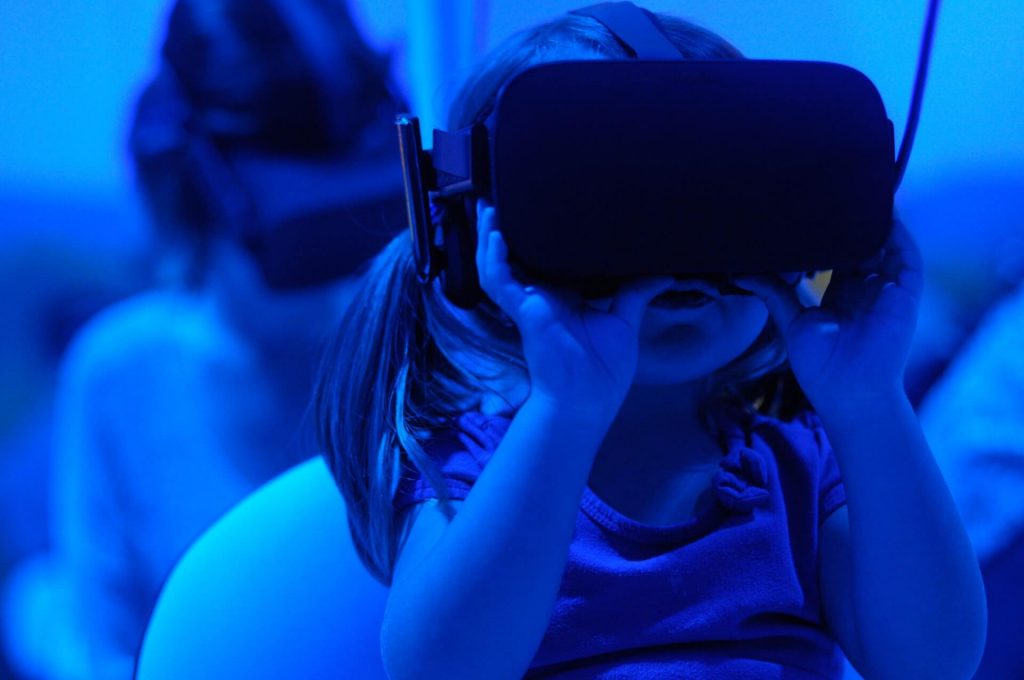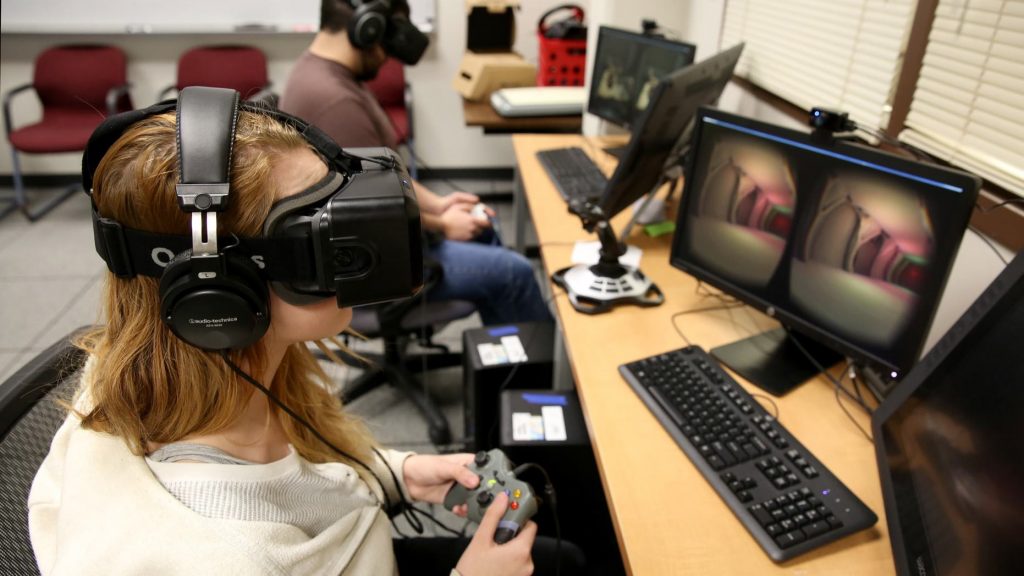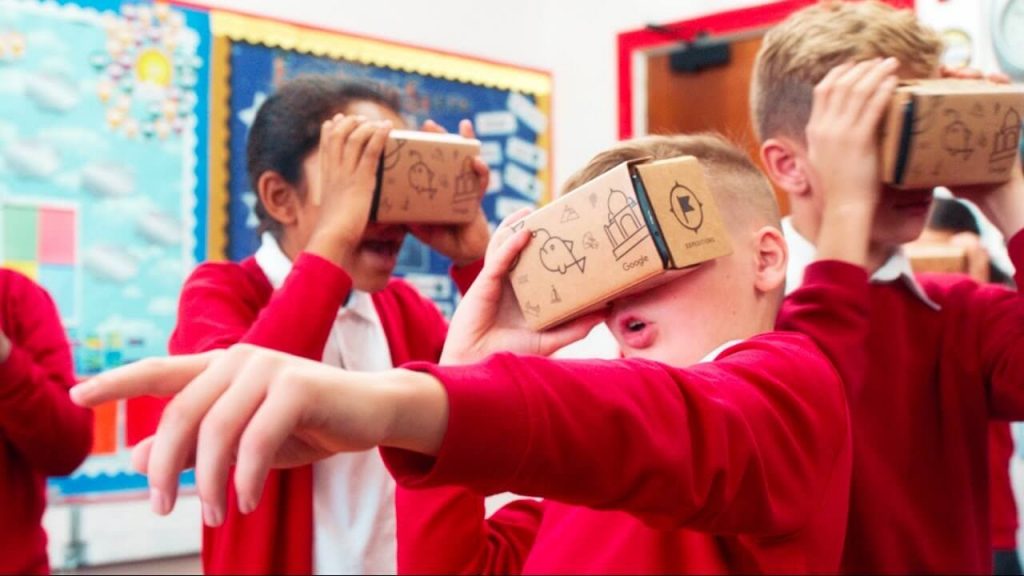Virtual reality has become more and more accessible recently as the technology has advanced. Right now, most people associate it with video games but the possibilities as to how we can use it are endless. From the agriculture industry to medicine to manufacturing and labor-intensive jobs, technology is changing the way we may complete several tasks and projects in our particular fields of work.
It’s not surprising education is beginning to benefit from the likes of the technology used in virtual and augmented reality. On top of that, augmented reality has already proven to be incredibly engaging with games like Pokemon Go. For this reason alone, it’s easy to say children are already familiar with the technology. But some of the most exciting options for virtual reality are the potential ways we can begin to integrate the technology into educational resources for our children and young adults.

Augmented Reality vs. Virtual Reality
Many make the mistake of assuming virtual reality and augmented reality are the same thing, but they’re actually quite different. Virtual reality is a completely immersive experience that shuts out the physical world while augmented reality just has certain components that are digitally imposed over a user’s live view. With Pokemon Go, players are able to see digital images of the creatures they’re trying to catch but they appear as if they’re in our physical surroundings, as opposed to games like Beat Saber, which make the player appear to be in a new world entirely.
While the idea of experiencing an augmented reality through technology might seem like something you only see in a futuristic science fiction movie, the truth of the matter is that this technology is here to stay. Advances are constantly being made and it’s something you can expect to start seeing in your children’s classrooms relatively soon if you haven’t already. Of course, educators have to be ready to make the changes as well.
The Benefits of AR and VR
The average student today has a much different view of technology than those in the past. Today’s student has grown up using the internet, tablets and mobile phones so it’s more than likely they will have an easier time adapting to new teaching processes than their teachers. While there might be a bit of a learning curve, using virtual reality in the classroom is a great opportunity to offer an education solution that is both fun and valuable to children and young adults. Studies have shown this type of technology helping with everything from developing better soft skills for later on in life to helping with focus overall.
Educators at the college level are beginning to integrate the technology into their classrooms as well, and it’s important for administrators to stay up to date on the rapidly changing technology trends. Digital tools access to online classes, and virtual and augmented reality technology are changing the way students learn and the amount of information that’s readily available is unlike any other time in history.
Many universities have already seen the benefits of virtual and augmented reality technology paying off in different ways by recreating specific periods in time for study purposes and providing virtual spaces for students to practice their design skills and more.
Virtual reality is the technology of the future and it’s important for educators to stay up to date on the constantly evolving trends in the education specter. While most people right now associate virtual and augmented reality with games like Pokemon Go and Beat Saber, it looks to have a very significant impact on the way teachers educate their students.
Tech from the Classroom to the Boardroom
With the use of virtual reality becoming more prominent in everyday life, using it in the classroom is a great way to prepare students for experiences further down the line in their education. On top of that, professionals are incorporating more and more technology into their jobs. As young adults become more comfortable with operating different kinds of technology, including virtual reality, this helps them stay in tune with potential changes in operations in the workforce.
Technology like augmented reality and artificial intelligence aren’t strictly relegated to fields like computer science. Instead, more and more industries are beginning to use technology in ways that have never before been attempted and can better prepare future generations. This includes everything from the digitization of patient paperwork and medical image analysis in healthcare to marketing and public relations with combatting deep fake videos of politicians, and celebrities. In the agriculture industry, artificial intelligence is shifting the way we grow our food and create sustainable resources. As teachers stay on top of technology trends, it’s not unreasonable to believe they’re giving their students a leg up on their potential careers in the future.
Virtual Reality and its Place in Education
It’s hard to be completely sure of what to expect when we speculate on the use of virtual reality in the classrooms. There are many areas where the use of it can be very beneficial but two of the main subjects looking to rely on it more are Geography and History. Very few, if any, schools have the funds to take their classes on field trips to various historical monuments or places around the world, but with the use of virtual reality, it becomes a possibility.
Right now there is technology available that allows students to “virtually” experience monuments like the Pyramids of Giza or the Great Wall of China. This helps to give them a better understanding of their learning as they visualize the areas they’re studying. With the use of drones, images and videos of the areas have been captured and uploaded into the virtual reality software. They are then stitched together and add to the “realness” of the experience as the students can completely immerse themselves, surrounded by three-dimensional photos and panoramic views of the landscapes.
No matter how educators begin to use virtual and augmented reality in the classroom, it’s important to keep in mind that this technology is only going to continue to evolve as the years go on. When you keep up with the changes, you’re benefiting both yourself and your students now and in the future as well.
Written by Jori Hamilton. You can follow her on Twitter and LinkedIn.




